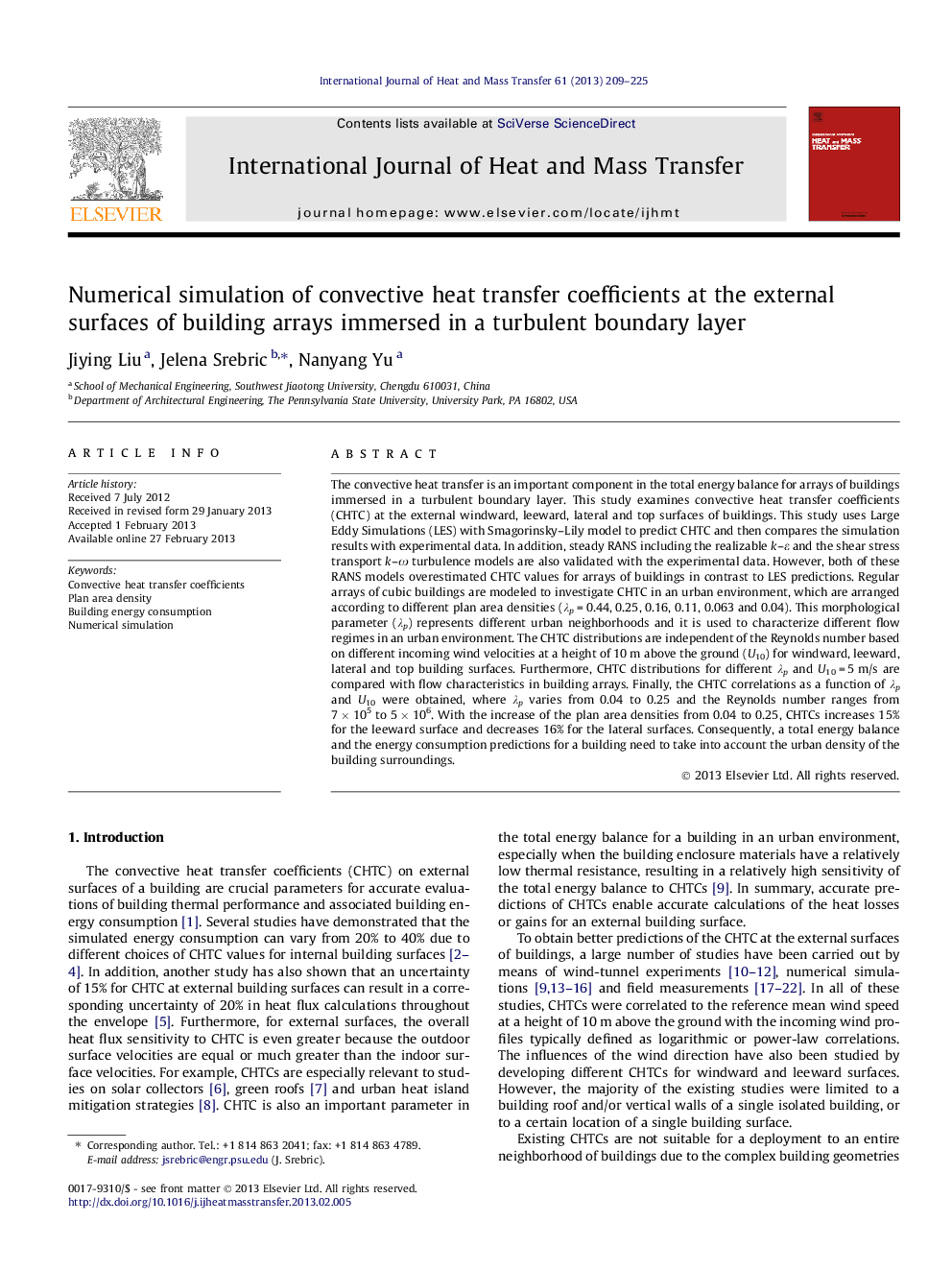| کد مقاله | کد نشریه | سال انتشار | مقاله انگلیسی | نسخه تمام متن |
|---|---|---|---|---|
| 7058912 | 1458081 | 2013 | 17 صفحه PDF | دانلود رایگان |
عنوان انگلیسی مقاله ISI
Numerical simulation of convective heat transfer coefficients at the external surfaces of building arrays immersed in a turbulent boundary layer
ترجمه فارسی عنوان
شبیه سازی عددی ضرایب انتقال گرما در نقاط خارجی آرایههای ساختمان که در یک لایه مرزی آشفته قرار دارند
دانلود مقاله + سفارش ترجمه
دانلود مقاله ISI انگلیسی
رایگان برای ایرانیان
کلمات کلیدی
ضریب انتقال حرارت همرفت چگالی منطقه را برنامه ریزی کنید مصرف انرژی ساختمان، شبیه سازی عددی،
موضوعات مرتبط
مهندسی و علوم پایه
مهندسی شیمی
جریان سیال و فرایندهای انتقال
چکیده انگلیسی
The convective heat transfer is an important component in the total energy balance for arrays of buildings immersed in a turbulent boundary layer. This study examines convective heat transfer coefficients (CHTC) at the external windward, leeward, lateral and top surfaces of buildings. This study uses Large Eddy Simulations (LES) with Smagorinsky-Lily model to predict CHTC and then compares the simulation results with experimental data. In addition, steady RANS including the realizable k-ε and the shear stress transport k-Ï turbulence models are also validated with the experimental data. However, both of these RANS models overestimated CHTC values for arrays of buildings in contrast to LES predictions. Regular arrays of cubic buildings are modeled to investigate CHTC in an urban environment, which are arranged according to different plan area densities (λp = 0.44, 0.25, 0.16, 0.11, 0.063 and 0.04). This morphological parameter (λp) represents different urban neighborhoods and it is used to characterize different flow regimes in an urban environment. The CHTC distributions are independent of the Reynolds number based on different incoming wind velocities at a height of 10 m above the ground (U10) for windward, leeward, lateral and top building surfaces. Furthermore, CHTC distributions for different λp and U10 = 5 m/s are compared with flow characteristics in building arrays. Finally, the CHTC correlations as a function of λp and U10 were obtained, where λp varies from 0.04 to 0.25 and the Reynolds number ranges from 7 Ã 105 to 5 Ã 106. With the increase of the plan area densities from 0.04 to 0.25, CHTCs increases 15% for the leeward surface and decreases 16% for the lateral surfaces. Consequently, a total energy balance and the energy consumption predictions for a building need to take into account the urban density of the building surroundings.
ناشر
Database: Elsevier - ScienceDirect (ساینس دایرکت)
Journal: International Journal of Heat and Mass Transfer - Volume 61, June 2013, Pages 209-225
Journal: International Journal of Heat and Mass Transfer - Volume 61, June 2013, Pages 209-225
نویسندگان
Jiying Liu, Jelena Srebric, Nanyang Yu,
